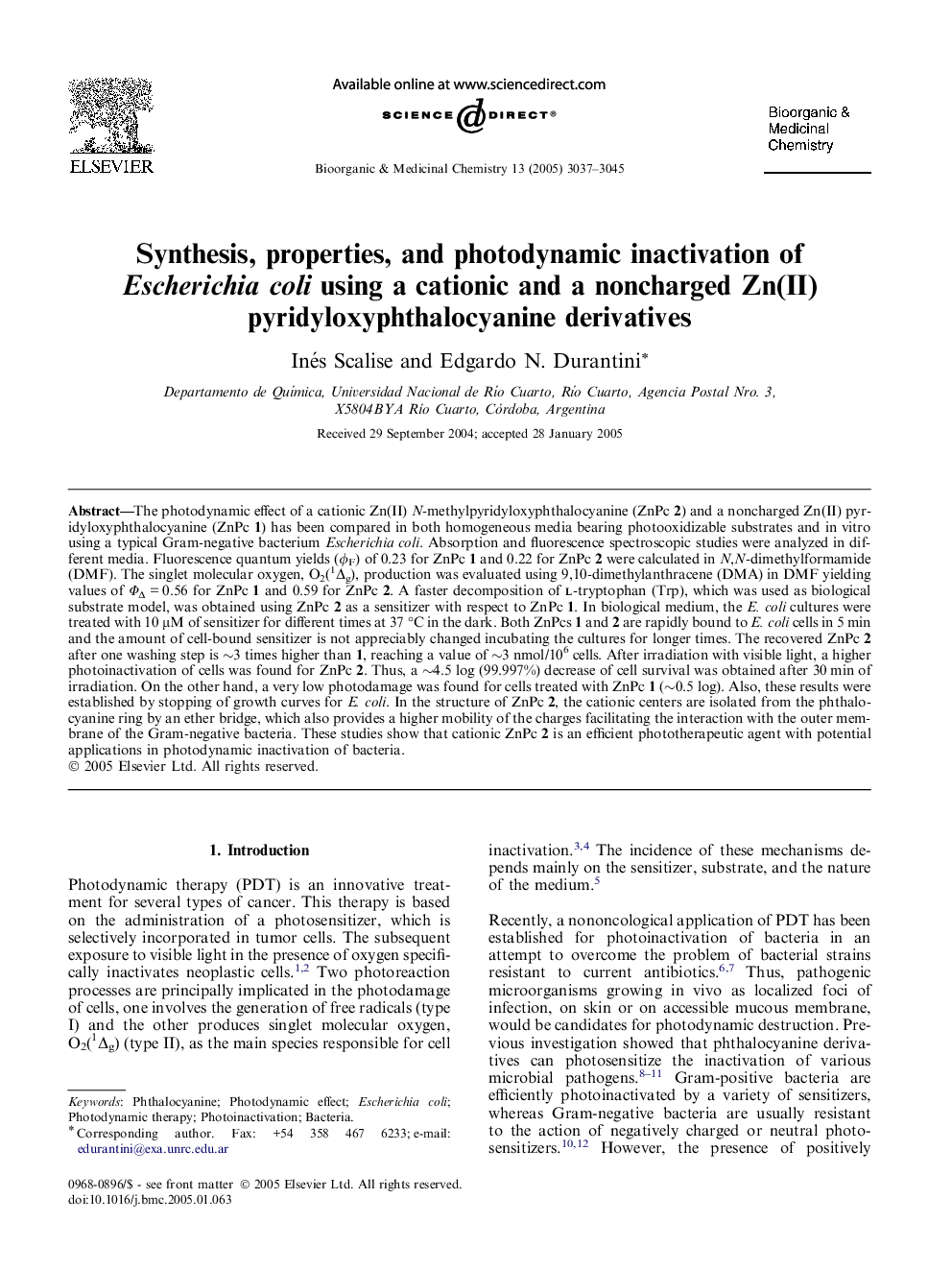| کد مقاله | کد نشریه | سال انتشار | مقاله انگلیسی | نسخه تمام متن |
|---|---|---|---|---|
| 1366477 | 981592 | 2005 | 9 صفحه PDF | دانلود رایگان |

The photodynamic effect of a cationic Zn(II) N-methylpyridyloxyphthalocyanine (ZnPc 2) and a noncharged Zn(II) pyridyloxyphthalocyanine (ZnPc 1) has been compared in both homogeneous media bearing photooxidizable substrates and in vitro using a typical Gram-negative bacterium Escherichia coli. Absorption and fluorescence spectroscopic studies were analyzed in different media. Fluorescence quantum yields (ϕF) of 0.23 for ZnPc 1 and 0.22 for ZnPc 2 were calculated in N,N-dimethylformamide (DMF). The singlet molecular oxygen, O2(1Δg), production was evaluated using 9,10-dimethylanthracene (DMA) in DMF yielding values of ΦΔ = 0.56 for ZnPc 1 and 0.59 for ZnPc 2. A faster decomposition of l-tryptophan (Trp), which was used as biological substrate model, was obtained using ZnPc 2 as a sensitizer with respect to ZnPc 1. In biological medium, the E. coli cultures were treated with 10 μM of sensitizer for different times at 37 °C in the dark. Both ZnPcs 1 and 2 are rapidly bound to E. coli cells in 5 min and the amount of cell-bound sensitizer is not appreciably changed incubating the cultures for longer times. The recovered ZnPc 2 after one washing step is ∼3 times higher than 1, reaching a value of ∼3 nmol/106 cells. After irradiation with visible light, a higher photoinactivation of cells was found for ZnPc 2. Thus, a ∼4.5 log (99.997%) decrease of cell survival was obtained after 30 min of irradiation. On the other hand, a very low photodamage was found for cells treated with ZnPc 1 (∼0.5 log). Also, these results were established by stopping of growth curves for E. coli. In the structure of ZnPc 2, the cationic centers are isolated from the phthalocyanine ring by an ether bridge, which also provides a higher mobility of the charges facilitating the interaction with the outer membrane of the Gram-negative bacteria. These studies show that cationic ZnPc 2 is an efficient phototherapeutic agent with potential applications in photodynamic inactivation of bacteria.
The photodynamic effect of a cationic Zn(II) N-methylpyridyloxyphthalocyanine (ZnPc 2) and a noncharged Zn(II) pyridyloxyphthalocyanine (ZnPc 1) has been compared in both homogeneous media bearing photooxidizable substrates and in vitro using a typical Gram-negative bacterium Escherichia coli. These studies show that cationic ZnPc 2 is an efficient phototherapeutic agent with potential applications in photodynamic inactivation of bacteria.Figure optionsDownload as PowerPoint slide
Journal: Bioorganic & Medicinal Chemistry - Volume 13, Issue 8, 15 April 2005, Pages 3037–3045